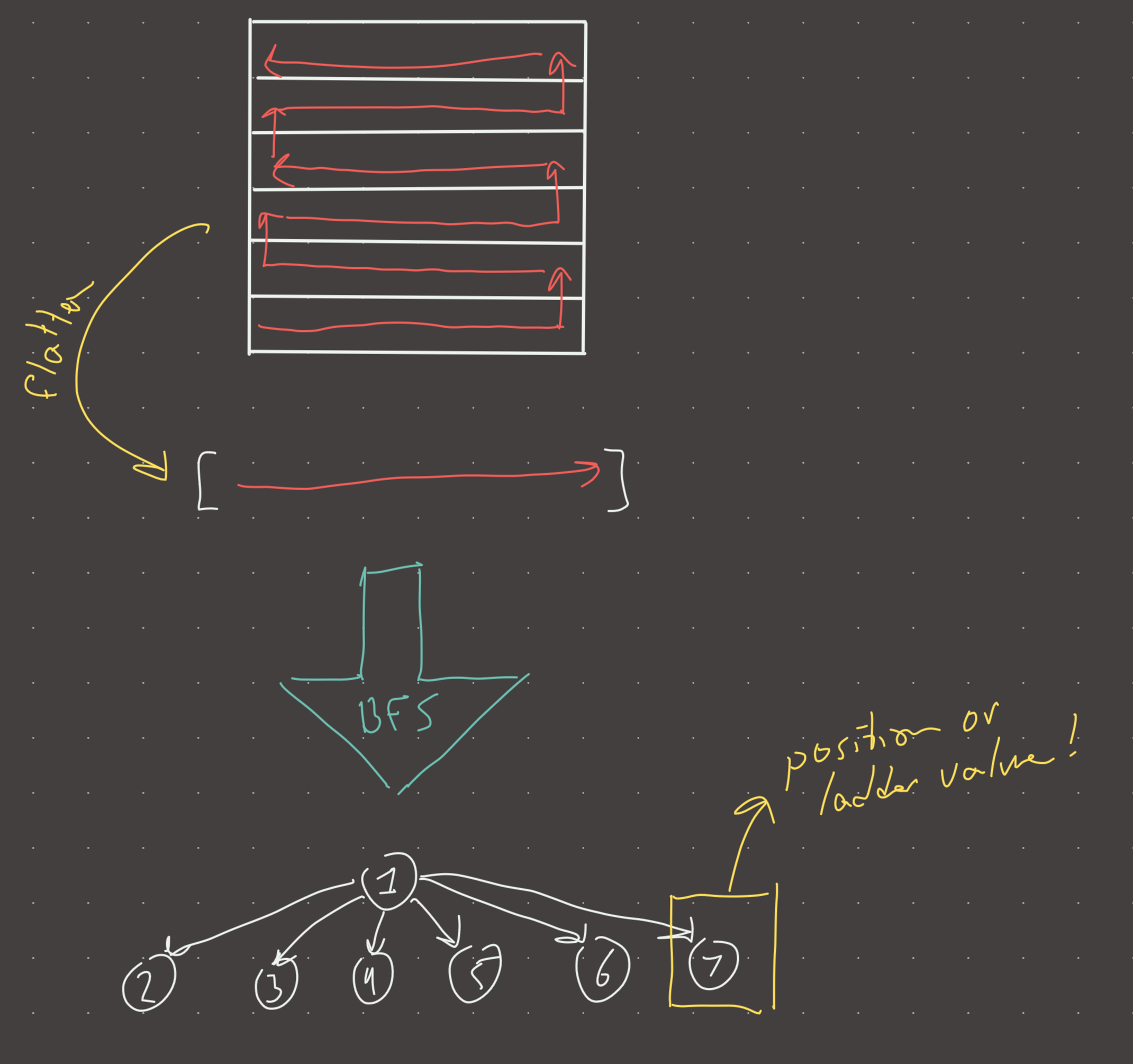Link: https://leetcode.com/problems/snakes-and-ladders/
Solution:
Intuition
Classic shortest path problem BFS problem with some edge cases in the way it’s set up. Because the positions are 1 indexed, its way more convenient to flatten the board into a 1d array and use the snake/ladders to index directly into the respective position.
Once that’s done, we simply perform a BFS starting a position 1 (or 0 if 0-indexed). We add to the queue the first 6 positions in front of the current position. If one of those positions is either a snake or a ladder, we add the value to the queue.
Keep a visited set on the positions to prevent cycles. For some reason that I can’t understand, modifying the board in-place for cycle prevention fails some test cases…just keep it simple and use a set.
Implementation
def snakes_and_ladders(board):
flat = []
flip = False
for row in board[::-1]:
row = row[::-1] if flip else row
flat += row
flip = not flip
visited = set()
queue = deque([(0, 0)])
while queue:
pos, moves = queue.popleft()
if pos in visited:
continue
if pos == len(flat)-1:
return moves
visited.add(pos)
for new_pos in range(pos+1, min(pos+7, len(flat))):
if flat[new_pos] == -1:
queue.append((new_pos, moves+1))
else:
queue.append((flat[new_pos]-1, moves+1))
return -1
#time: o(n**2)
#memory: o(n**2)Visual

Review 1
I immediately understood how to solve it but struggled for a while with the edge cases. Basically, as I understood the problem, if the end of a ladder is the start of a new ladder, then we could follow it on the next move. This is not the case. When you take a ladder, you CANNOT follow the subsequent ladder…you just treat it as if it is a -1. This simplifies the problem immensely.
Review 2
Pretty much solved it immediately but got stumped again by what it actually means to follow the next ladder. Basically you CAN’T follow it no matter what. For some reason I interpreted this as you are allowed, but only on the next move. Kind of annoying, but good problem.